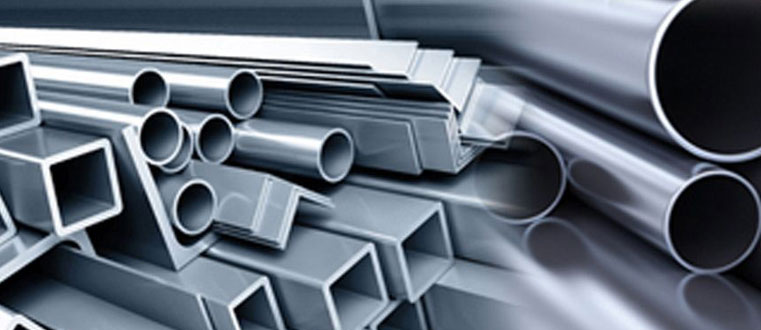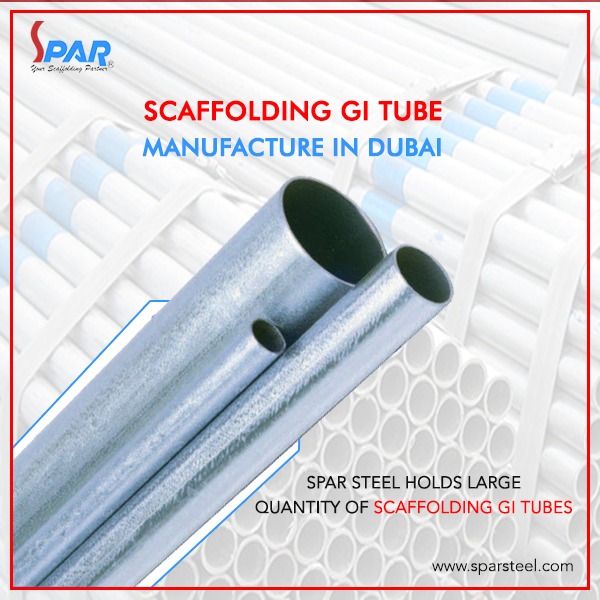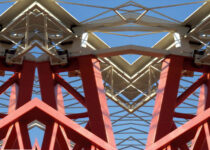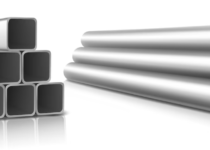Galvanized Pipes and Tubes Manufacturers and Suppliers
Galvanized pipes and tubes are essential components used in different industries like construction, plumbing, automobile, aerospace, telecommunication, agriculture, wind, solar, etc. Galvanized steel pipes are preferred over simple pipes as they resist corrosion, are durable for longer periods due to zinc coating, are lightweight, and are cheap in cost. In this article, you will know in detail about galvanized pipes, galvanizing processes and methods, features, advantages and benefits, applications and use, identification, lifespan, etc.
What are galvanized pipes and tubes?
Galvanized pipes and tubes are made of steel and have zinc coating on them. They are an essential component used in many industries like construction, scaffolds, automotive and aerospace, plumbing, wind and solar, agriculture, telecommunication, etc. The GI pipes are made of iron and steel and have zinc coating on them. The zinc coating protects the steel pipes from corrosion and makes them rust-free. As zinc deteriorates slowly it increases the age of the galvanized pipes and tubes. As the thickness of the coating of zinc, so does the protection of the pipes and tubes.
What is galvanization and how GI pipes is made?
The word ‘galvanization’ or ‘galvanizing’ is derived from the Italian scientist’s name Luigi Galvani. “The process of coating iron or steel pipes and tubes with a protective zinc layer protecting and preventing them from rusting is called galvanizing of pipes.” __ Dr. Md. Usmangani Ansari
Different Methods of Galvanizing
There are various galvanizing processes available, but the most commonly used method is called hot-dip galvanizing. The different methods of galvanizing are:
- Hot-Dip Galvanizing
- Galvannealing
- Pre-galvanizing
- Electro galvanizing or Electroplating
- Sherardizing Vapor galvanizing or Dry galvanizing.
- Metallic spraying and painting
Steps in Galvanizing Process of Steel Pipes and Tubes
- The iron and steel are cleaned in a degreasing solution.
- Then the steel is pickled by dipping it into a vat of diluted hot sulfuric acid.
- After that steel is fluxed in an aqueous solution of zinc-ammonium chloride.
- Post fluxing, the steel pipes are galvanized through immersion in a vat of molten zinc.
- And finally, the steel is inspected for consistency and a complete zinc coating.
Features of Galvanized Pipes and Tubes
GI Pipes and tubes are among the most popular steel pipes due to their long durability, high strength, and formability, and protected from corrosion and rusting by zinc-iron coating. The zinc coat protects the base metal pipes by acting as a barrier to corrosive elements, thereby making them long-lasting and high-quality steel pipes and tube products. The characteristics of galvanized steel pipes and tubes are:
- The galvanized steel pipes and tubes are excellent in corrosion resistance due to detailed and uniform thick zinc coating with non-porous crystals.
- The zinc layer coated by electroplating is relatively pure and as a result, it corrodes slowly in the midst of acid, alkali, etc., and maintains the steel substrate effectively.
- The zinc coating has excellent ductility, so it can be formed by cold punching, rolling, bending, etc. without damaging the coating.
- The passivated zinc coating by using chromic acid can make galvanized pipes white, colorful, military green, etc. with decorative colors.
- A dense and thick pure zinc layer on the steel pipes surface prevents the steel substrate from touching any corrosive solution and protects the steel substrate from rusting.
- The iron-zinc alloy layer on galvanized steel tubes and pipes protects them in marine salt spray and industrial atmosphere.
- The galvanized pipes have strong wear resistance due to the strong combination of zinc and iron which are mutually soluble.
- The steel structural parts are hot-dip galvanized, it effectively improves the mechanical function of the steel matrix and eliminates the stress during the forming and welding of the steel parts.
- The surface of the steel pipes’ parts looks bright and beautiful after hot-dip galvanizing.
- The pure zinc layer is ductile and endowed with plasticity in hot-dip galvanizing and so it is rich in flexibility.
Advantages of Galvanized Pipes and Tubes
GI pipes and tubes are used in different fields because of their advantages over other traditional pipes as these pipes are cheap compared to most treated steel, ready to use on delivery, and don’t require additional preparation of their surface, inspection, painting, coatings, etc.
What are the Benefits and Importance of Using Galvanized Pipes?
There are many sectors and industries use galvanized steel pipes and tubes because of their wide range of benefits, for example:
- Galvanized steel pipes and tubes are very durable and have a longer life. They have better resistance and anti-wear properties than simple steel pipes as zinc coating provides greater hardness value to the steel pipes’ surface.
- The galvanized pipes have a high level of abrasion resistance and so can withstand harsh weather conditions like wind and rain.
- They can be easily handled during transportation and their application and so can be used more easily in the preparation of different structures.
- The zinc-coated surface of galvanized pipes is resistant to corrosion and road salts. Here the zinc coat acts as a protective buffer between the steel and any moisture or oxygen.
- There is no need for additional paint coating to galvanized steel pipes.
- Their damage can be easily examined and inspected with the naked eye.
- The zinc coating on steel pipes is very hard to penetrate which protects the materials in the inner cavity of the galvanized pipes and tubes.
- They do not need a high level of repair or maintenance because of their durability and hardiness.
How to Identify Galvanized Pipes and Tubes
If you want to identify whether a pipe is made from galvanized steel or from copper or plastic then carefully scratch the surface of the pipe or tube. If the pipe is made from:
- Copper, the scratched surface area of the pipe will show a look of a copper penny, or
- Galvanized steel, the scratched surface area of the pipe will be looked like a silver-gray color, or
- Plastic material, then the scratched area is generally will be in black color.
Application and Uses of Galvanized Pipes
Before 1970 galvanized steel pipes and tubes were usually used for water-supply pipes in construction work and building. But at present galvanized pipes and tubes have different types of indoor and outdoor applications in many industries such as:
- Building construction,
- Cold and hot water supply in bathrooms,
- Plumbing in kitchen,
- Drainage systems of homes, hospitals, factories, etc.
- Scaffolding structure,
- Fence posts and rails,
- Protective railings, etc.
Which Industries Use Galvanized Steel Pipes?
Galvanized steel pipes and galvanized metals are used in many industries, you can say that these metals are utilized everywhere like:
- Spare parts industries
- Construction industries
- Aerospace and automobile or automotive
- Wind and solar industries
- Telecommunication industries
- Agriculture and farming
- Plumbing
1. Spare parts-making industries: All kinds of nuts, bolts, tools, and wires are galvanized to boost their metal’s durability and lifespan.
2. Construction industries: Building structures like steel frame buildings, balconies, verandahs, staircases, ladders, fences, roofs, outdoor walkways, etc.
3. Aerospace and automobile or automotive: Zinc-coated bodies for automobiles like car bodies of galvanized metals, Aerospace industry uses galvanized steel pipes because of their lightweight, strong, anti-corrosion, and durability.
4. Wind and solar industries: Hot-dipped galvanized steel pipes and tubes are popular in making solar projects structure and frame for their corrosion protection and environmental friendliness as it doesn’t produce emissions and ensures decades of lifespan without maintenance.
5. Telecommunication industries: Telephone materials like phone wiring, equipment boxes, and towers are made from galvanized steel or iron pipes. The galvanized metals provide the structure low-maintenance, and resistant to rusting of telecommunication equipment in an open varied environment.
6. Agriculture and farming: Agricultural tools, equipment, machines, and other gadgets are made from galvanized iron having a zinc coat as a protective layer to resist corrosion, chemical, and natural forces, thus saving from tearing.
7. Plumbing industries: Like other industries, plumbing and piping industries use galvanized pipes and tubes mainly of iron and steel.
Galvanized Pipes and Tubes Life Expectancy
GI pipes or galvanized steel pipes and tubes have generally an average life expectancy of anywhere between 25 and 7o years depending on various factors such as the region’s weather conditions and the types of industries used. The factors which affect the lifespan of galvanized pipes are water impurities, humidity, chemicals, environmental conditions, and indoor and outdoor applications.
GI Pipes and Tubes Manufacturers and Suppliers in the Middle East

Sparsteel Industries is one of the most preferred and leading galvanized pipes and tube manufacturers and suppliers in the UAE, Saudi Arabia, and other Middle East and MENA countries for many years. Spar Steel manufactures and exports galvanized steel pipes in different dimensions and shapes as per the needs of clients at competitive prices in the market.





